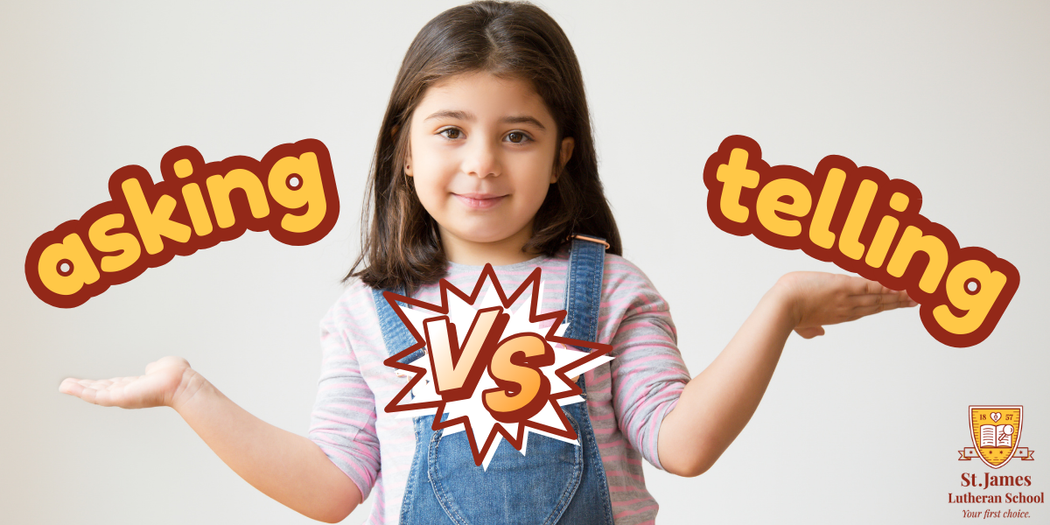Logical Consequences
Logical Consequences: Teaching Responsibility Through Positive Discipline

Every action has a consequence, but how do we ensure that those consequences teach valuable life lessons rather than just punishing bad behavior? In this article, we’ll explore the concept of logical consequences—intentional, thoughtful responses to children’s actions that encourage growth, responsibility, and learning. By following a few simple guidelines, adults can use logical consequences as a powerful tool in helping children develop critical life skills.
What Are Logical Consequences?
Logical consequences are a form of discipline that require adult intervention and are designed to help children understand the relationship between their actions and the outcomes. Unlike natural consequences, which happen on their own (like getting wet from the rain), logical consequences are purposeful and planned by the adult to be directly related to the child’s behavior. They focus on helping children learn responsibility in a respectful and constructive manner.
The Three R’s and an H: Key Principles for Effective Logical Consequences
To ensure that logical consequences are effective and supportive, it’s essential to follow the three R's and an H. These principles ensure that the consequence is meaningful, fair, and conducive to learning. Let's break down these guiding principles:
1. Related: A Consequence That Makes Sense
The consequence must be directly related to the behavior. This helps the child clearly understand the link between their action and the outcome. A consequence that makes sense encourages learning and responsible decision-making.
Example: If a child refuses to complete their homework, a related consequence might be losing access to screen time until the task is finished. This consequence is directly connected to the child’s behavior and emphasizes the importance of completing responsibilities before enjoying leisure activities.
2. Respectful: Enforcing with Kindness and Firmness
The consequence should be enforced respectfully, without blame, shame, or physical punishment. It should focus on the behavior, not the child’s character, and be delivered in a kind but firm manner. A respectful consequence fosters a healthy relationship between the child and the adult, showing that the adult cares for the child’s growth.
Example: If a child refuses to pick up their toys, instead of yelling or scolding, calmly explain that if the toys aren’t picked up, they will be put away for a short time. This respectful approach maintains the adult-child relationship while also teaching responsibility.
3. Reasonable: Fair and Achievable for the Child
The consequence should be reasonable from both the child’s and the adult’s perspectives. It must be fair, achievable, and something that the child can understand and reasonably expect. If the consequence feels too harsh or unrealistic, it may lead to resistance or confusion.
Example: If a child forgets to bring their lunch to school, a reasonable consequence might be that they have to prepare their own lunch the next day. The child can understand this response and learn to take responsibility for remembering important items.
4. Helpful: Aimed at Encouraging Growth
The ultimate goal of logical consequences is to help the child learn and grow. The consequence should provide an opportunity for the child to reflect on their actions and make better choices in the future. Instead of feeling punished, the child should feel empowered to improve their behavior.
Example: If a child forgets their jacket on a cold day, a helpful consequence might be that they experience the discomfort of being cold for a short period. This teaches them the value of being prepared without causing harm or lasting discomfort.
Why Logical Consequences Are Not Punishment
It’s important to differentiate between logical consequences and punishment. When used correctly, logical consequences are designed to teach, not to punish. However, if they are used as a threat or imposed in anger, they lose their constructive value and become punitive in nature. Children are quick to recognize the difference between a learning experience and a punishment.
Punishment often focuses on control through fear, shame, or guilt, leading to compliance through external pressure. In contrast, logical consequences promote internal growth by encouraging children to recognize the impact of their actions. They also help children understand the natural order of events: actions have consequences, and those consequences help them make better decisions in the future.
Collaborating with Your Child: Involving Them in the Process
One of the most effective ways to make logical consequences meaningful is by involving the child in the decision-making process. By discussing the situation together and asking for their input on what might be a fair consequence, you empower the child to take responsibility for their actions. This collaborative approach fosters problem-solving skills and gives the child a sense of ownership over their behavior.
Example: If your child constantly forgets to put their shoes away, ask them, “What do you think should happen if you don’t put your shoes away?” This discussion invites the child to think about the consequences of their actions and come up with a reasonable solution.
Practical Examples of Logical Consequences
Here are some specific examples of logical consequences that are related, respectful, reasonable, and helpful:
1. If You Break It, You Fix It
Example: If your child breaks a window while playing, a logical consequence might be that they need to earn money to pay for the repair. This teaches the child responsibility for their actions and the value of money, while also providing a direct connection to the consequences of their behavior.
2. Responsibility for Personal Items
Example: If your child doesn’t put their clothes in the hamper, they won’t be washed. This teaches the child the importance of taking care of their personal belongings and the connection between actions and outcomes.
3. Learning from Weather-related Consequences
Example: If your child refuses to wear snow boots on a cold day, the logical consequence might be that their socks get wet. This natural consequence teaches them the importance of dressing appropriately for the weather, helping them learn from their own experiences.
Conclusion: Using Logical Consequences Effectively
Logical consequences, when applied thoughtfully, can be an excellent tool for teaching children responsibility, accountability, and important life skills. By ensuring that consequences are related, respectful, reasonable, and helpful, parents and caregivers can create an environment that fosters learning and growth. The key is to approach logical consequences as an opportunity for children to understand the connection between their actions and the results, rather than as a form of punishment.
By maintaining a calm, positive, and collaborative approach, adults can help children develop the skills they need to make better choices in the future. With the right balance of guidance and independence, logical consequences can empower children to take ownership of their actions and become more responsible and thoughtful individuals.










